© 2025 MJH Life Sciences™ , Patient Care Online – Primary Care News and Clinical Resources. All rights reserved.
A Confluent, Crusty Rash
How would you approach diagnosis of this widespread, nonpruritic rash? Lab work? Skin tests? Or will history and physical findings suffice?
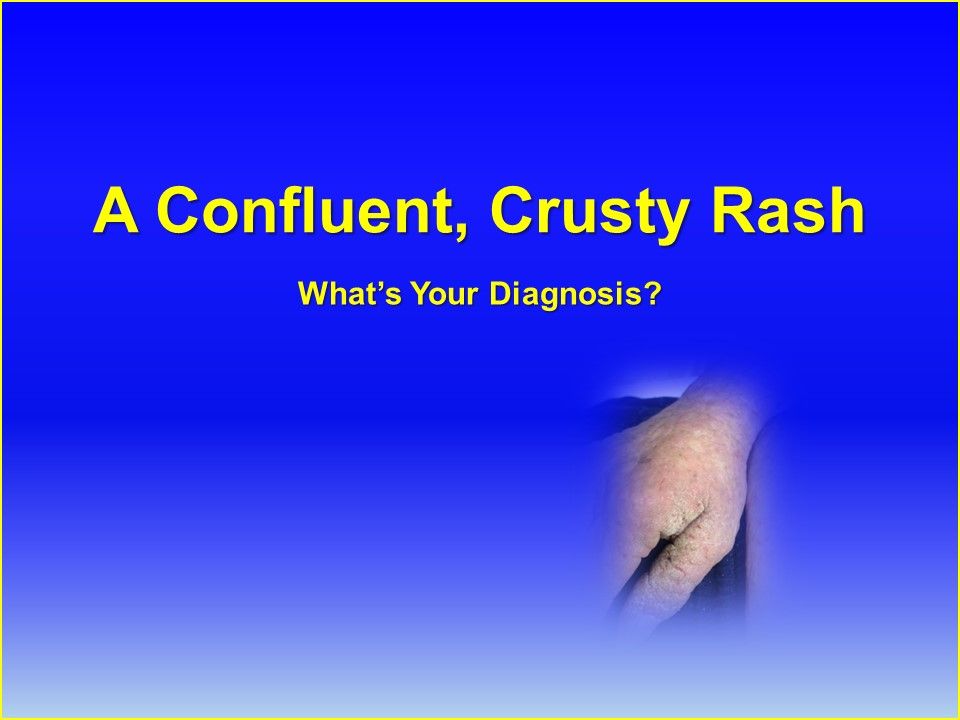
The rash on this 60-year-old man is widespread and nonpruritic. Are there salient clues to the diagnosis in the presenting medical and social histories? Would laboratory or other tests be indicated or are the physical findings sufficent for confirmation of your suspicion? Start with the next slide to learn more.
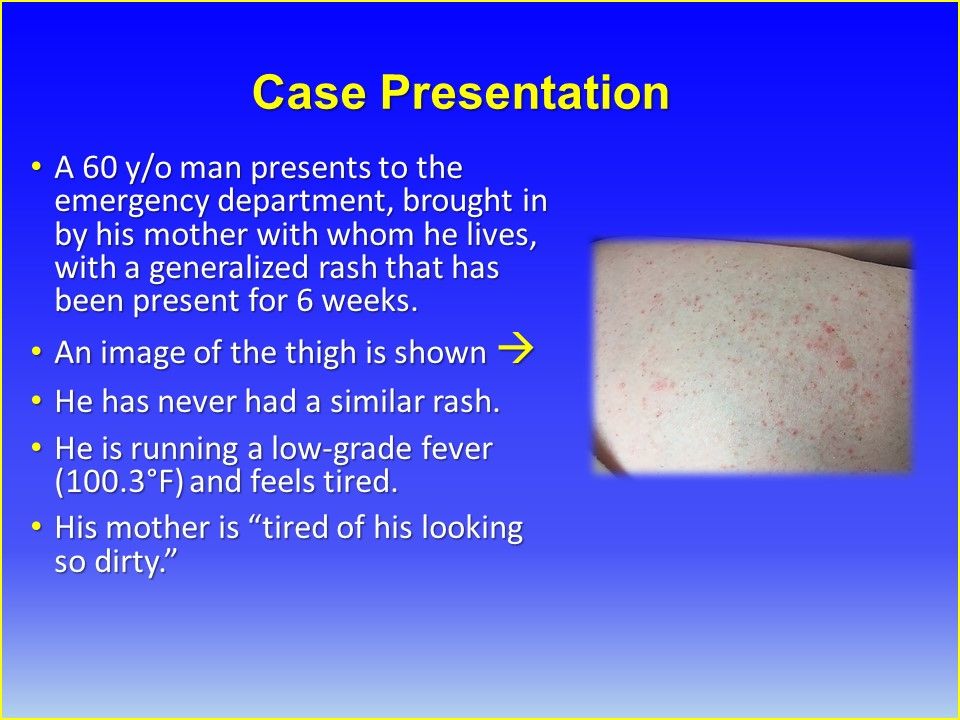
Case Presentation. The patient presents with a generalized crusted rash of 6 wks duration. He is running a low-grade fever and feels tired.

Pertinent Patient History. Patient is HIV infected and on HAART. Medical hx: hypertension, non-melanoma skin cancers. Denies pruritus, history of eczema, or previous similar rash. Denies any recent unprotected sex, IV drug use.
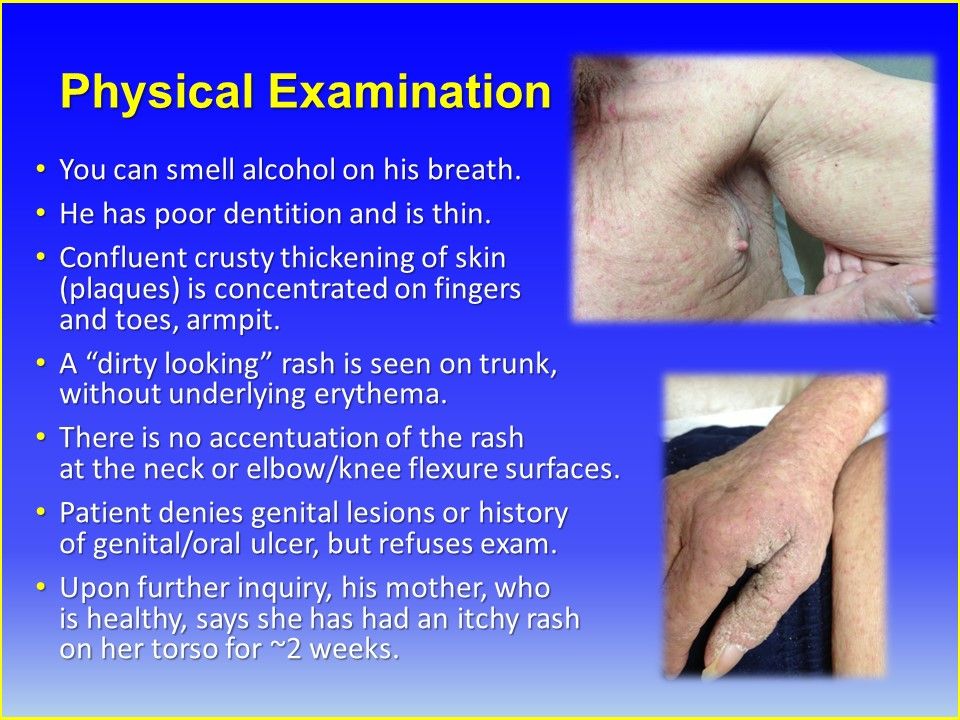
Physical Examination. Patient has poor dentition and appears thin. Widespread crusty thickening of skin (plaques) is concentrated on fingers and toes, armpit. No accentuation of rash is seen at neck or elbow/knee flexure surfaces. Patient denies genital lesions or history of genital/oral ulcer.

Based on history and physicial findings, which the above diagnoses do you suspect? Scabies, Norwegian (crusted) scabies, atopic dermatitis, contact dermatitis, syphilis secondary, psoriasis vulgaris, pellagra.
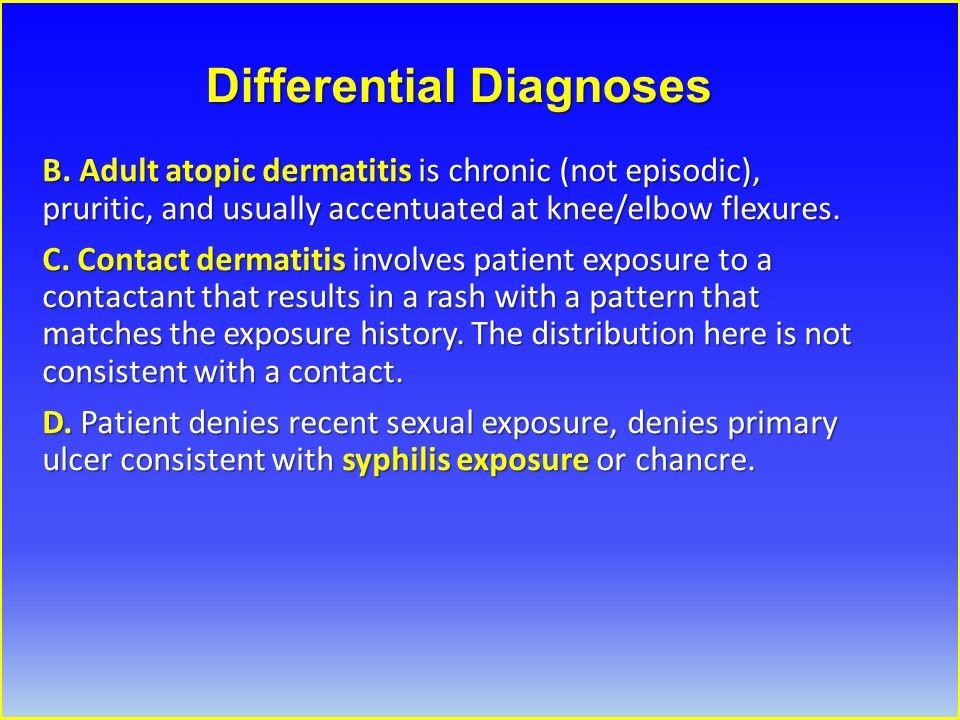
Differential Diagnoses Ruled Out: Atopic dermatitis is chronic, pruritic, affects knee/elbow flexures; contact dermatitis requires identifiable contactant/pattern of rash; no evidence to support syphilis.
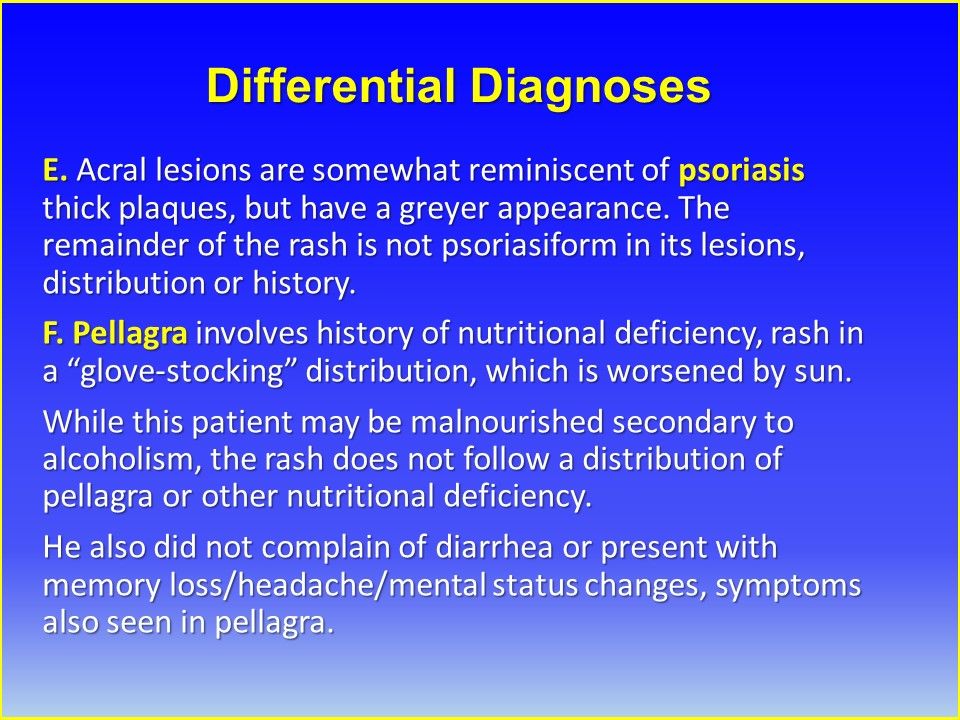
Differential Diagnoses Ruled Out: Acral plaques resemble psoriasis but remainder of lesions are not psoriasiform nor does history support diagnosis. Pellagra rash appears in a "glove-stocking" distribution not seen here.
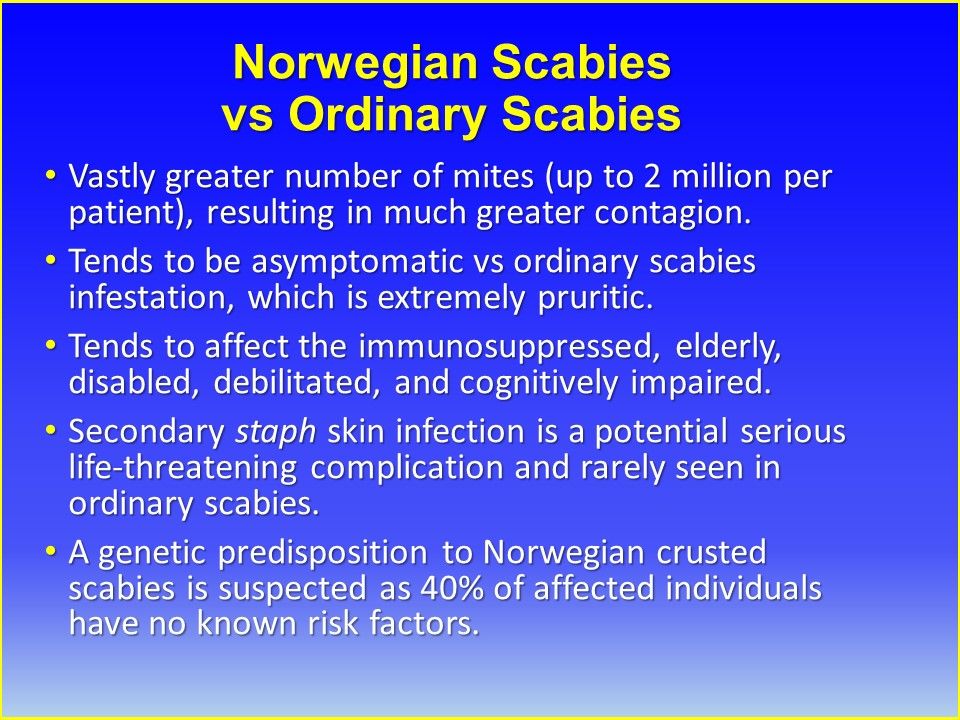
Norwegian Scabies vs Ordinary Scabies. Vastly greater number of mites (up to 2 million/patient), resulting in much greater contagion; asymptomatic (non-pruriticc) vs ordinary scabies infestation; tends to affect immunosuppressed, elderly, disabled, debilitated, cognitively impaired.

Answer: E. Testing unnecessary. Gross clinical findings are sufficient to make a diagnosis but patients may be asympotmatic prior to physicial signs of infestation so high index of suspicion is necessary.
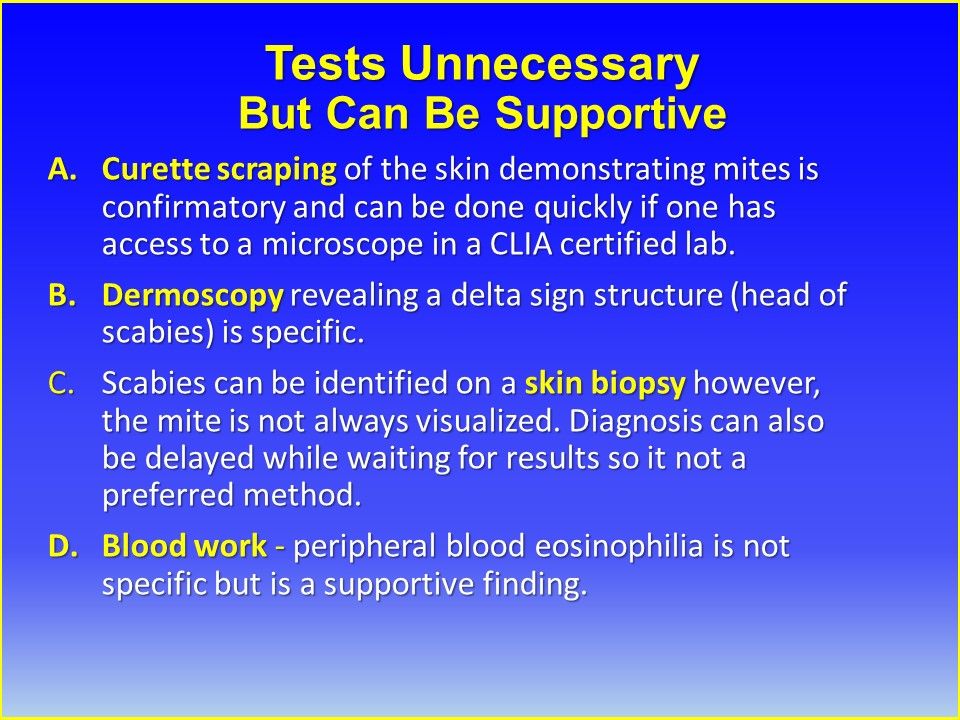.JPG?fit=crop&auto=format)
Tests Unnecessary but can be Supportive. Curette scraping of the skin demonstrating mites is confirmatory; dermoscopy revealing a delta sign structure (head of scabies) is specific. Scabies can be identified on skin biopsy but mites are not always visualized. Peripheral blood eosinophilia is not specific but is a supportive finding.

Answer: D. Extensive sun damage is not a risk factor for Norweigan scabies. Infestation is more common in individuals with immunosuppressive conditions. Neurologic impairment with paralysis or loss of sensation or mental disability also predispose to Norwegian scabies.
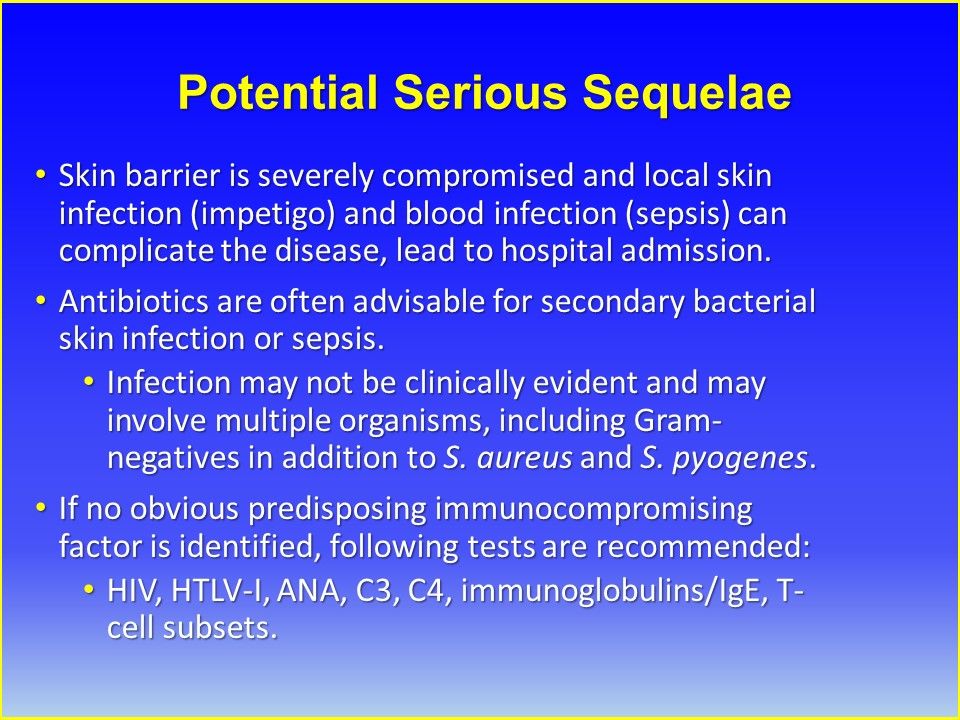
Potential Serious Sequelae. Local skin infection (impetigo) and blood infection (sepsis) are possible complications and can lead to hospital admission. Antibiotics are often advisable for secondary bacterial skin infection or sepsis.
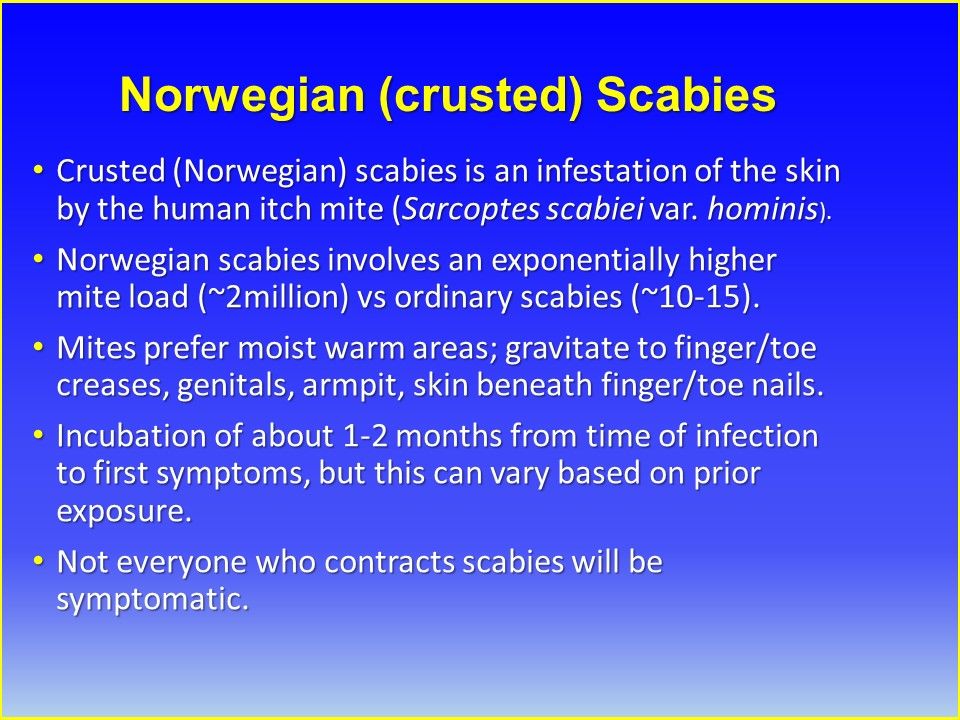
Norwegian (crusted) Scabies. Infection is not native to Scandinavia--name derives from the condition being first identified in 19th century Norway. Involves exponentially higher mite load (~2million) vs ordinary scabies (~10-15). Incubation of about 1-2 months from time of infection to first symptoms, but this can vary based on prior exposure.
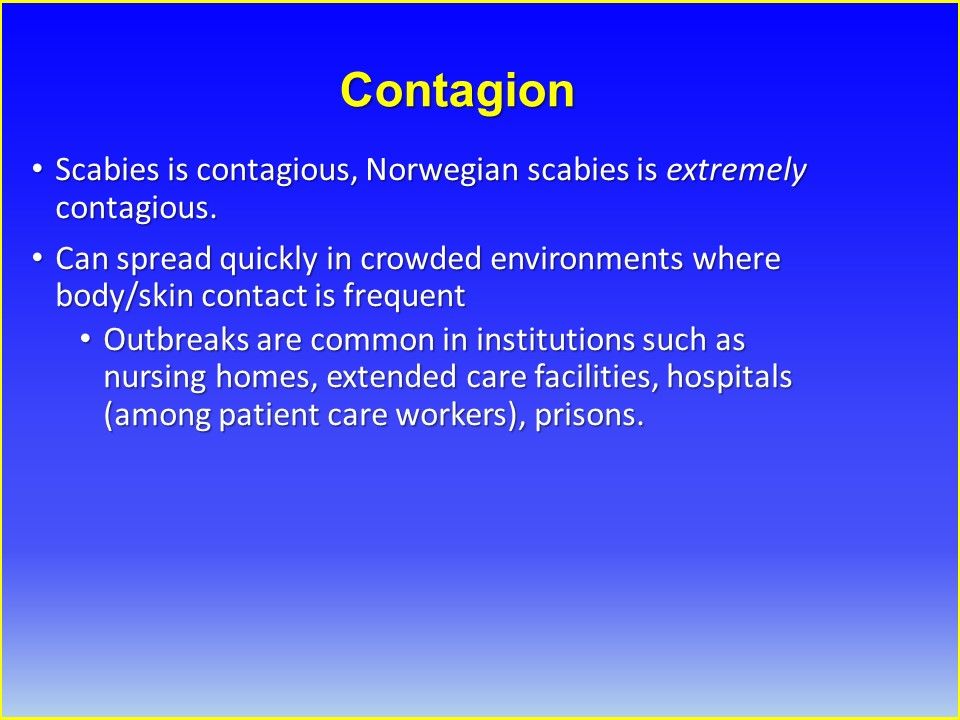
Contagion. Norwegian scabies is extremely contagious; can spread quickly in areas of frequent body/skin contact; common in institutional environments housing elderly, infirm.
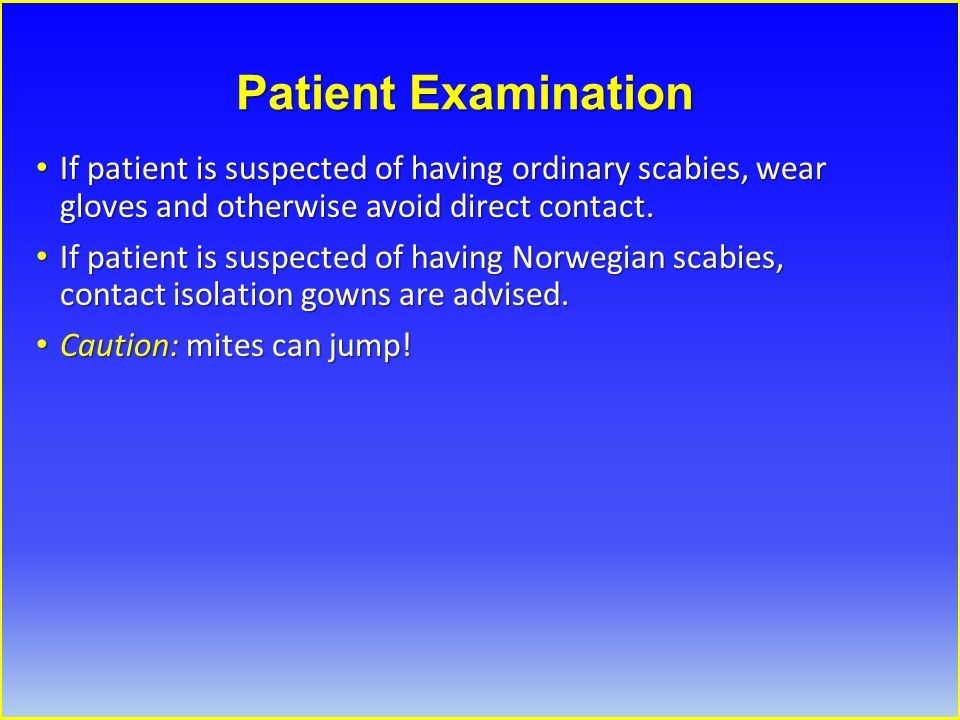
Patient Examination. If patient is suspected of having Norwegian scabies, contact isolation gowns are advised.
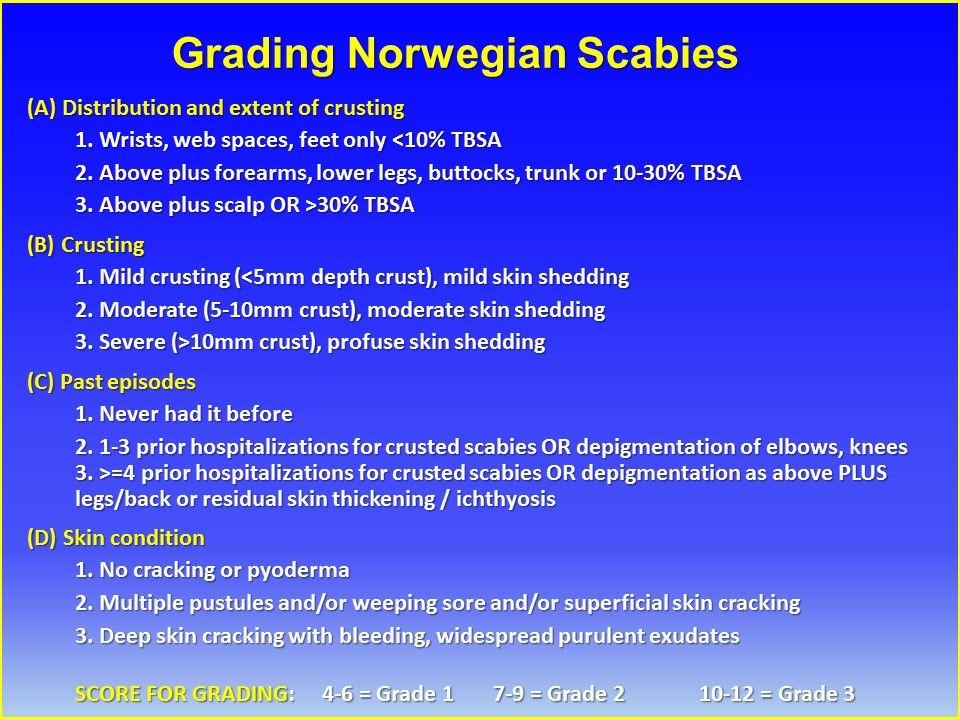
Grading Norwegian Scabies. Available atCDC Website.

Treatment of Norwegian Scabies. Combie oral/topical treatment; single-treatment failure not uncommon. Oral ivermectin (200µg/kg/dose): 3- (mild), 5- (moderate) or 7- (severe) dose regimens depending on grading. Apply topical 5% permethrin cream to skin, under nails from neck down.

Norwegian Scabies Treatment, cont'd. Topical keratolytic (urea- and lactic-acid based) cream may also be used to help reduce skin crusting.
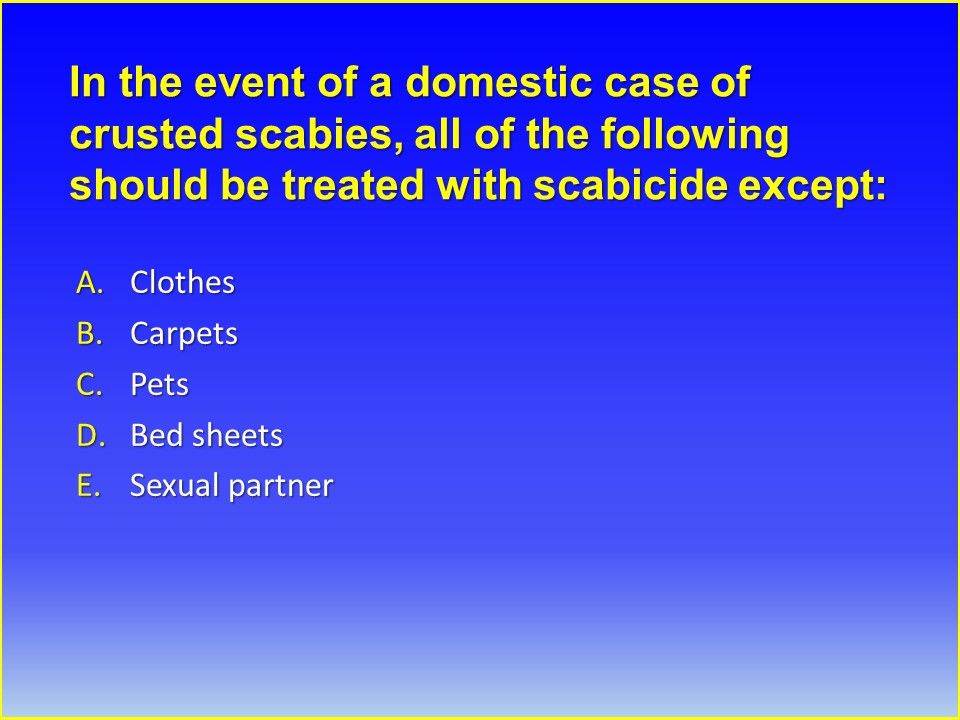
In the event of a domestic case of crusted scabies, which of the above should NOT be treated with scabicide?
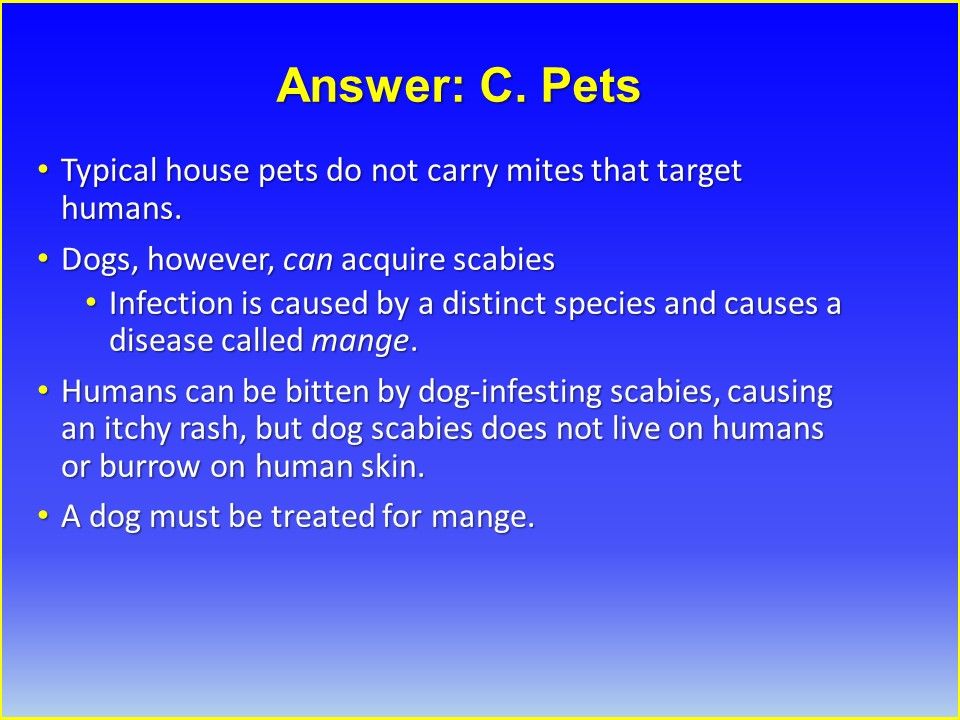
Answer: C. Pets do not need to be treated with scabicide. Typical house pets do not carry mites that target humans.
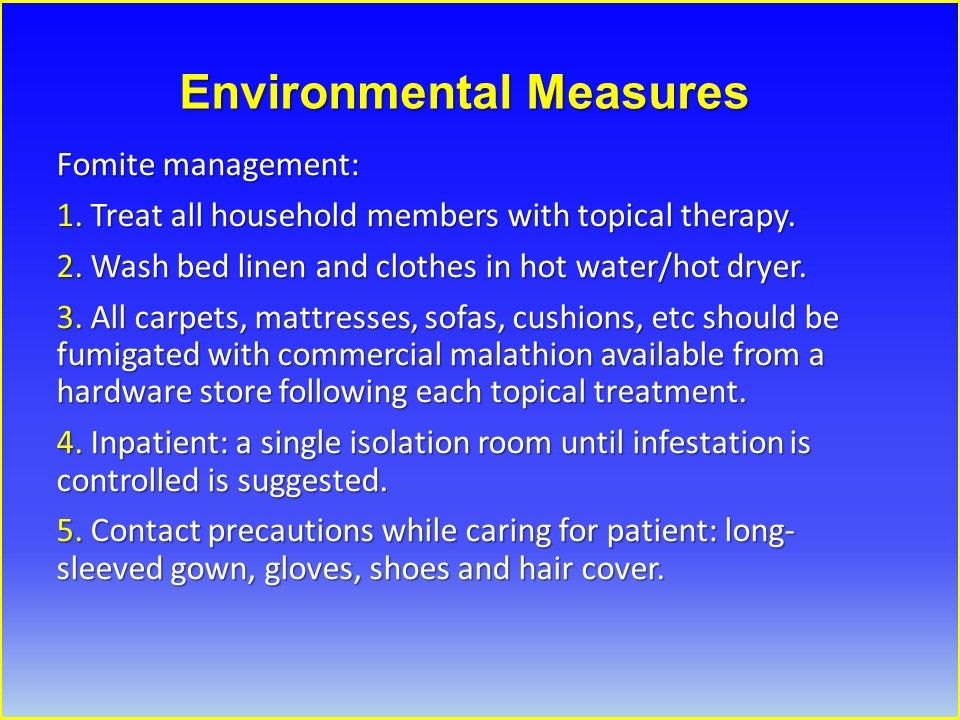
Environmental Measures. Topical therapy for household members; wash bed linen, clothes, etc in hot water/dryer; fumigate furniture with commercial malathion. Inpatient: single isolation room until infestation is controlled; cotact precautions for cargivers: long-sleeved gown, gloves, shoes, hair cover.







